History of Mercury Racing
Mercury Racing Evolution
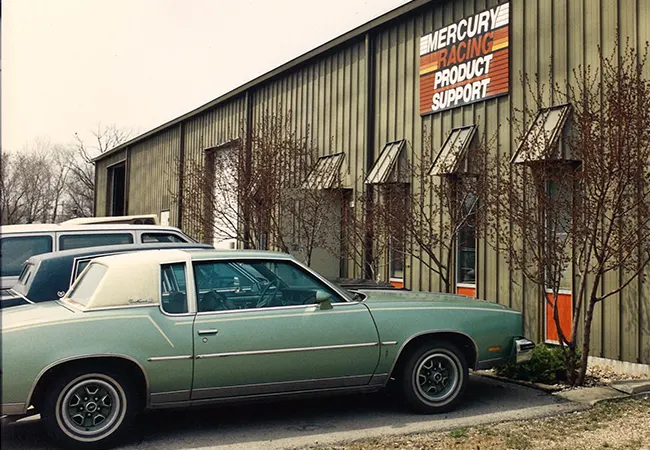
1973
The Mercury Marine Hi-Performance Products Department was established in 1973 to provide amateur and professional boat racers with a complete marine racing center.
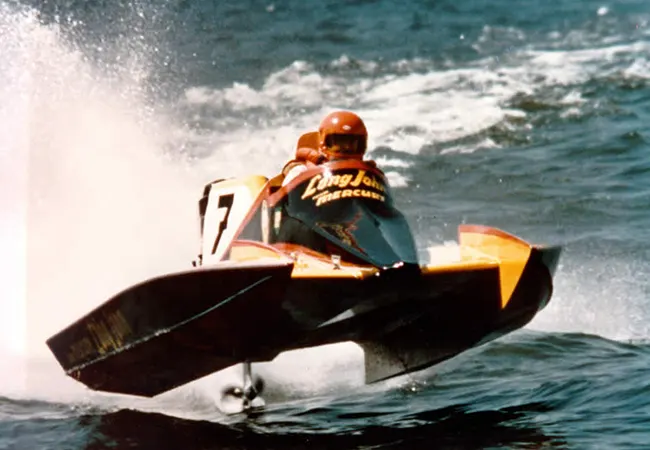
1976
Mercury Hi-Performance offers 2.4-liter V6 competition outboards.
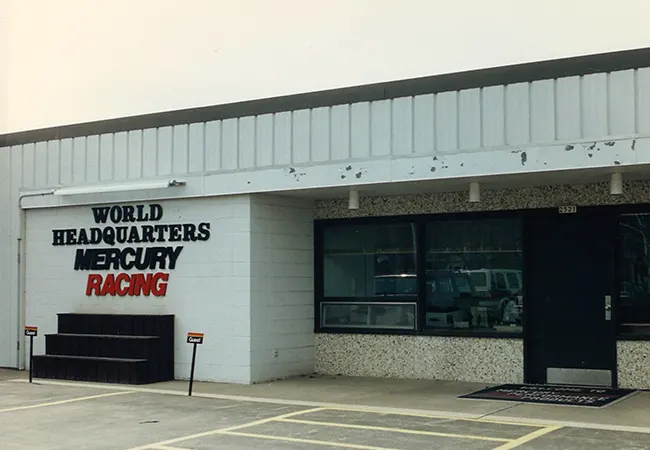
1977
Mercury Hi-Performance moves to 2521 Bowen Street, Oshkosh, Wis.
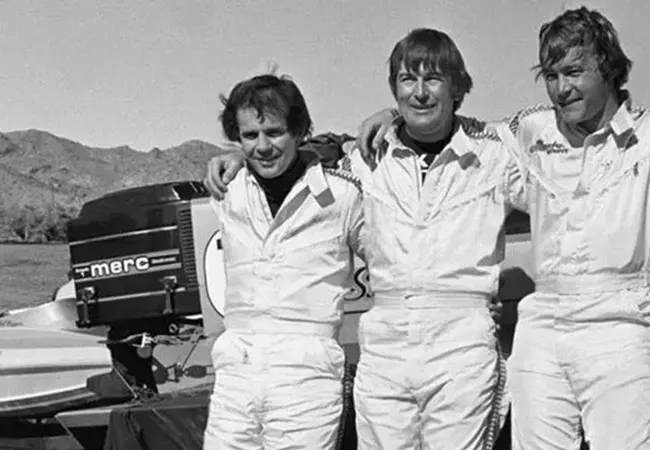
1979
Team drivers Billy Seebold, Reggie Fountain and Earl Bentz, dubbed the Black Angels, had dominated the top levels of national and international tunnel boat competition.
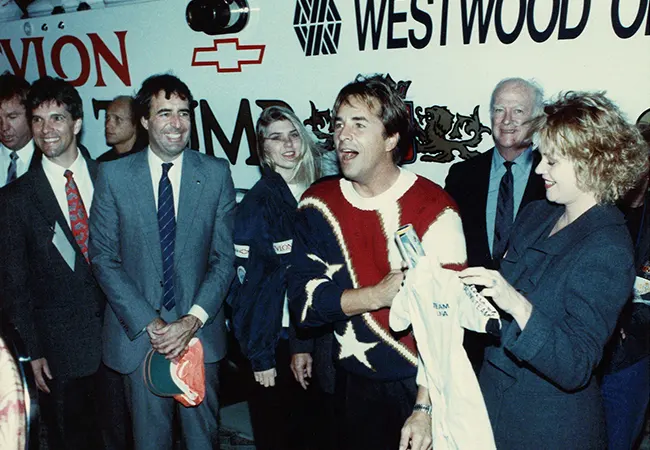
1987
A 43-foot Wellcraft Scarab powered by twin MerCruiser Hi-Performance 630hp 8.9-liter Lamborghini V12 engines wins the Budweiser Challenge Cup, a 1,039-mile race up the Mississippi River from New Orleans to St. Louis, with Miami Vice star Don Johnson at the helm.
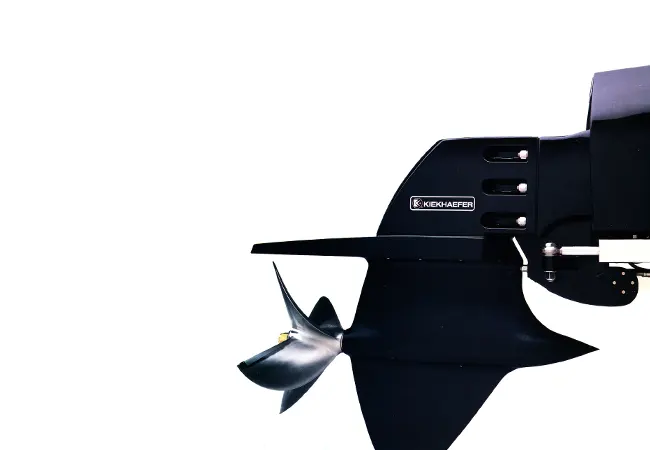
1990
Brunswick Corporation acquires Kiekhaefer Aeromarine Inc. and begins the integration of Kiekhaefer Aeromarine operations and products, including the Sterndrive by Kiekhefer, Zero Effort controls, K-Plane trim tabs and propellers, with Mercury Performance Products. Fred Kiekhaefer is named president of the new organization.
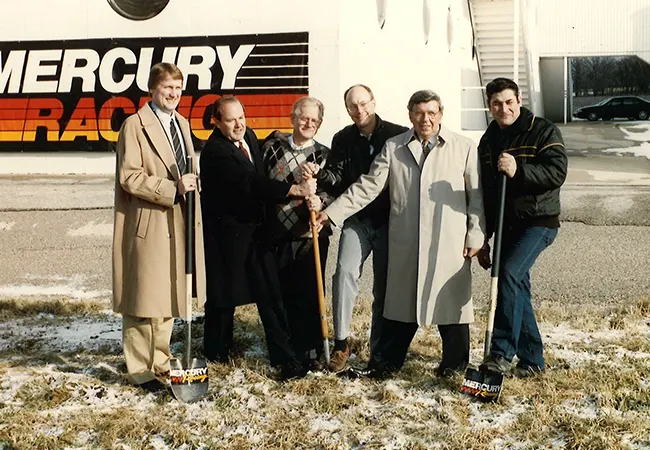
1994
Hi-Performance operations are consolidated in the newly expanded Plant 36 facility, the former Kiekhaefer Aeromarine building located on “The Ledge” overlooking Lake Winnebago.
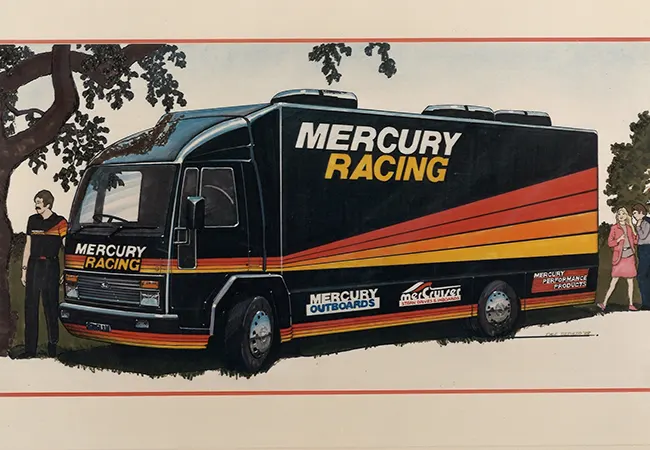
1999
Mercury Hi-Performance becomes Mercury Racing.
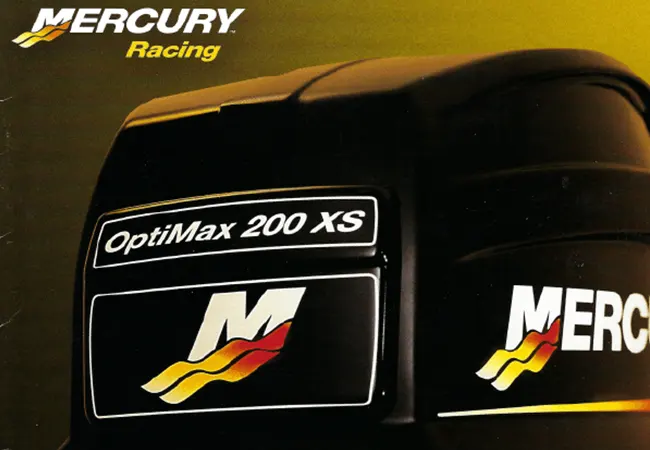
2000
Mercury Racing OptiMax 200 XS combines low-emission two-stroke technology with race-proven hardware. It’s the ultimate advancement of the 2.5-liter V6. A 3.2-liter 300hp Mercury Racing OptiMax 300XS would appear in 2006.
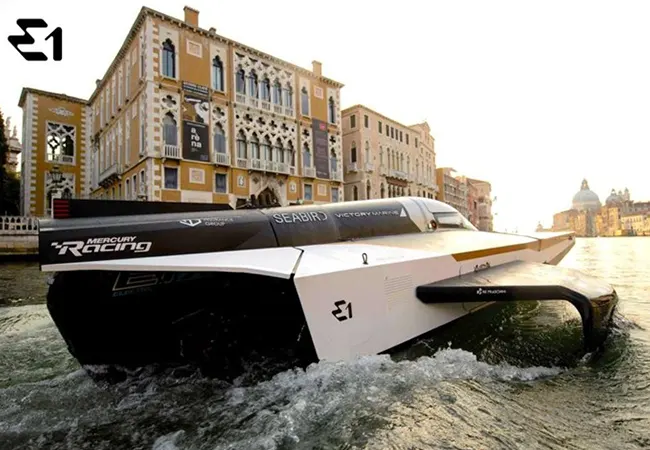
2006
New Mercury Racing CNC-machined 5-blade Sterndrive Cleaver propellers offer a new level of precision for the most-demanding racers and performance boaters.
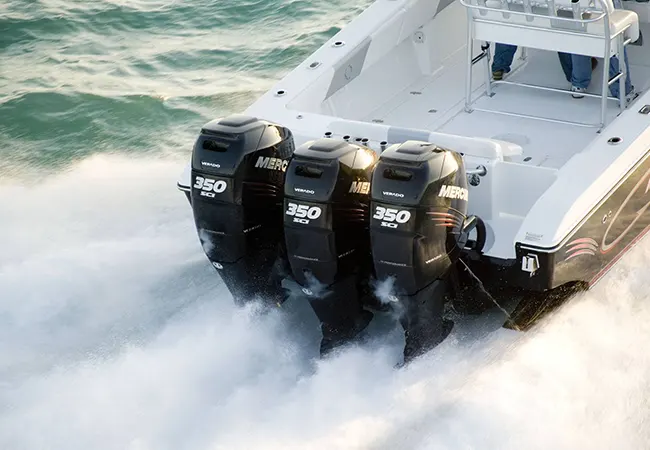
2008
Mercury Racing Verado 350 SCi, the first high-performance four-stroke outboard, features custom cool-air induction, Racing Advanced MidSection, power steering and SmartCraft digital controls. The supercharged 2.6-liter L6 powerhead delivers instant thrust and 350 peak horsepower.
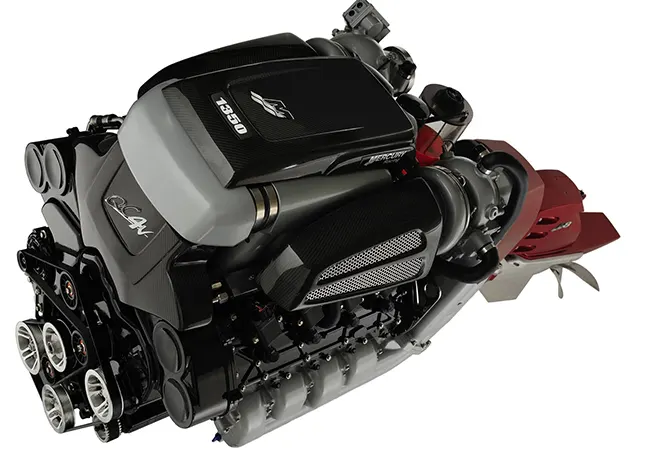
2010
Mercury Racing takes sterndrive performance to a new level with the introduction of the Quad Cam Four Valve (QC4) 1350, a 9.0-liter turbocharged V8 designed from the crankshaft up for marine duty by Mercury Racing. The engine is mated to a new robust M8 drive and electro hydraulic transmission.
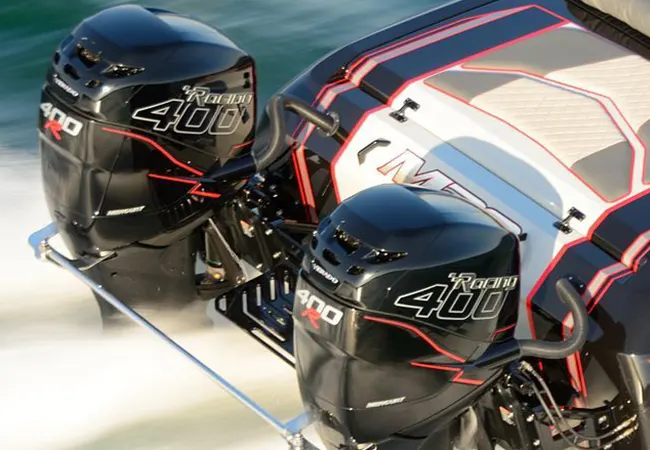
2015
Mercury Racing Verado 400R sets a new benchmark for four-stroke outboard performance.
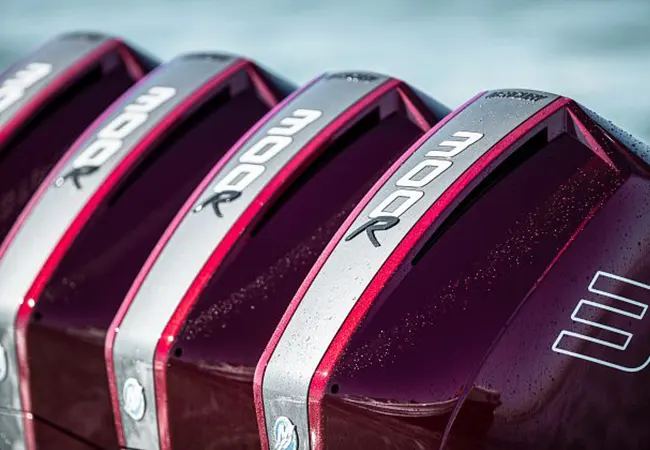
2018
Mercury Racing debuts a new generation of high-performance outboards with the reveal of the 250R and 300R models based on a deep-breathing 4.6-liter V8 powerhead with QC4 heads, rugged midsection and gearcase options, power steering and a host of advanced technology.
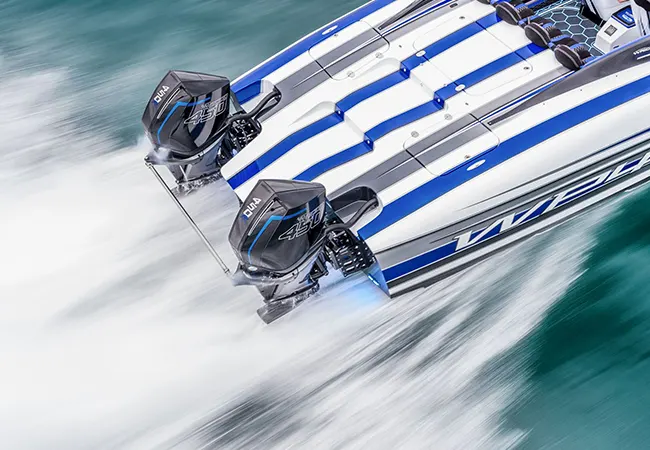
2019
The supercharged 4.6-liter V8 Mercury Racing 450R model elevates outboard performance to another level. It’s the most powerful consumer outboard ever offered by Mercury Racing.
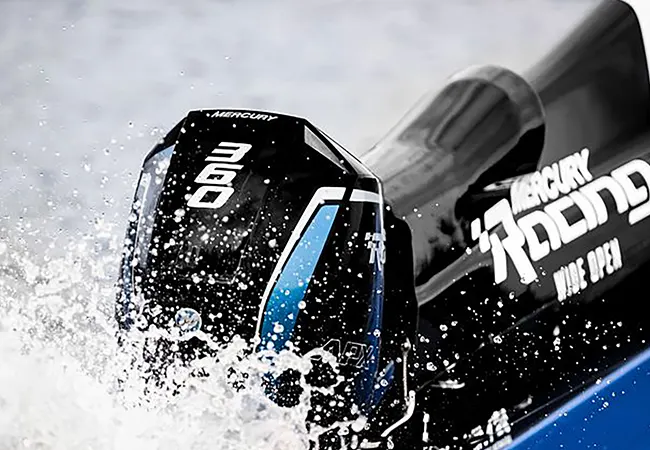
2020
Mercury Racing introduces the Apex Series, low-emissions outboards designed for closed-course competition. The Mercury Racing 360 APX is a potent four-stroke V8 designed specifically for boats competing on the UIM F1H2O World Championship.
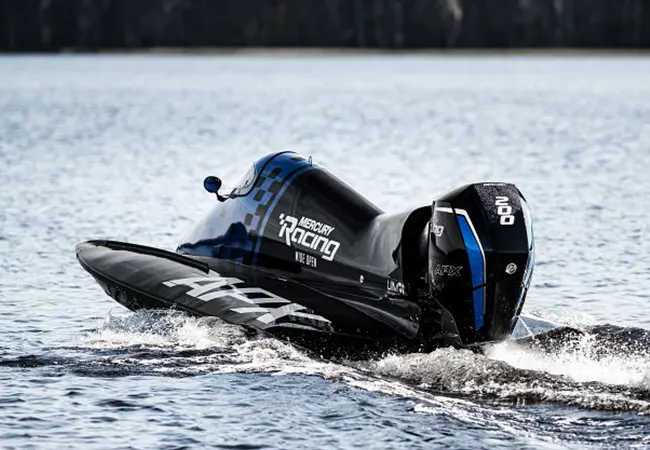
2022
The new 3.4-liter V6 four-stroke Mercury Racing 200 APX outboard is approved by the American Power Boat Association for the OPC Formula 200 tunnel boat class as an alternative to aging Mercury Racing 200XS OptiMax and older two-stroke V6 outboards.
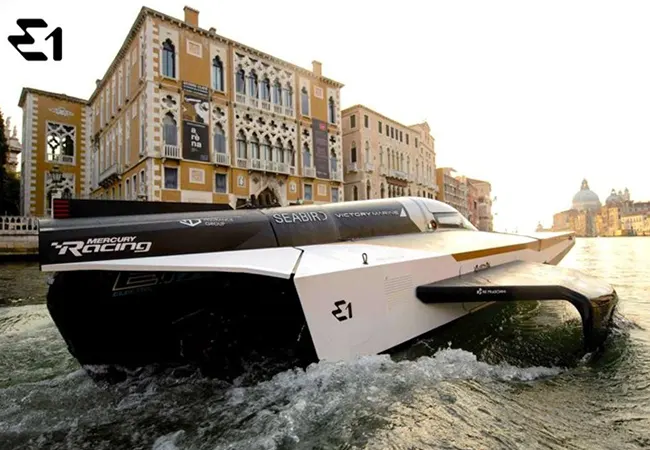
2022 - E1
Mercury Racing joins the E1 World Championship as Official Propulsion and Propeller Partner and begins development of a 150 kW (about 200 hp) electric competition outboard for this new circuit-racing series.
History Of Mercury Racing
Mercury Racing charges into a Wide Open future, celebrating 50 years of advancing the art and science of performance on the water.
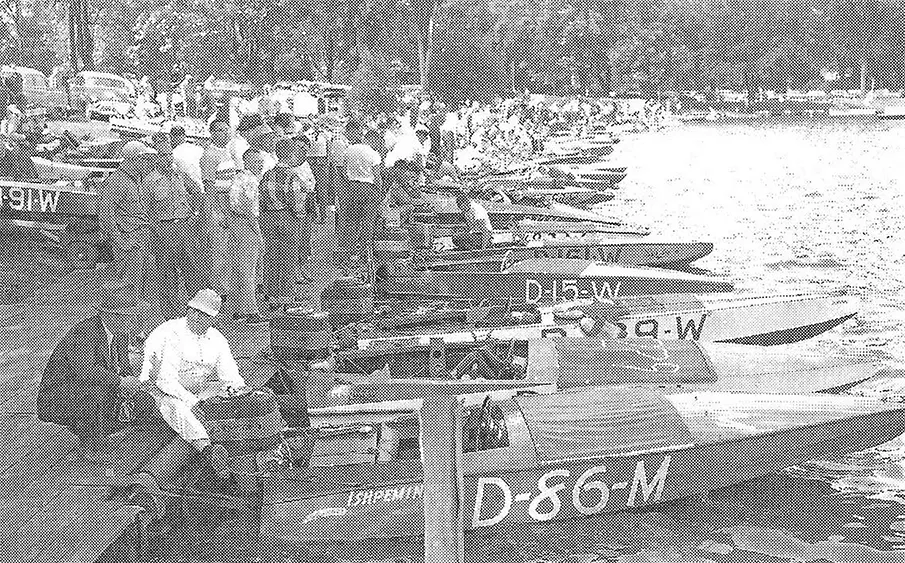
Always Racing
In 1947 a boat powered by the new Kiekhaefer Mercury Lightning outboard won its class in the grueling, 130-mile Albany to New York powerboat marathon. Carl Kiekhaefer quickly realized the marketing potential presented by racing and in 1948 encouraged the American Powerboat Association (APBA) to sanction grass-roots, Stock Utility classes to showcase the speed of Mercury outboards alongside rivals Evinrude and Johnson. Success in competition established the Mercury reputation for high performance. Kiekhefer’s unquenchable desire to dominate his competitors created a culture of winning at Mercury. The race was on.
The Legend Of Lake X
In 1957 Carl Kiekhaefer crisscrossed Florida in his plane scouting for a warm-weather location that would offer him absolute privacy for testing new Mercury outboards. A patch of water near St. Cloud called Lake Conlin looked promising. Only a rough dirt trail through a cypress woods infested with snakes and alligators led to the shore of the 1,400-acre lake. There were no buildings on the property, and no utility services were available. It was essentially cut off from civilization. Kiekhaefer thought it was perfect.
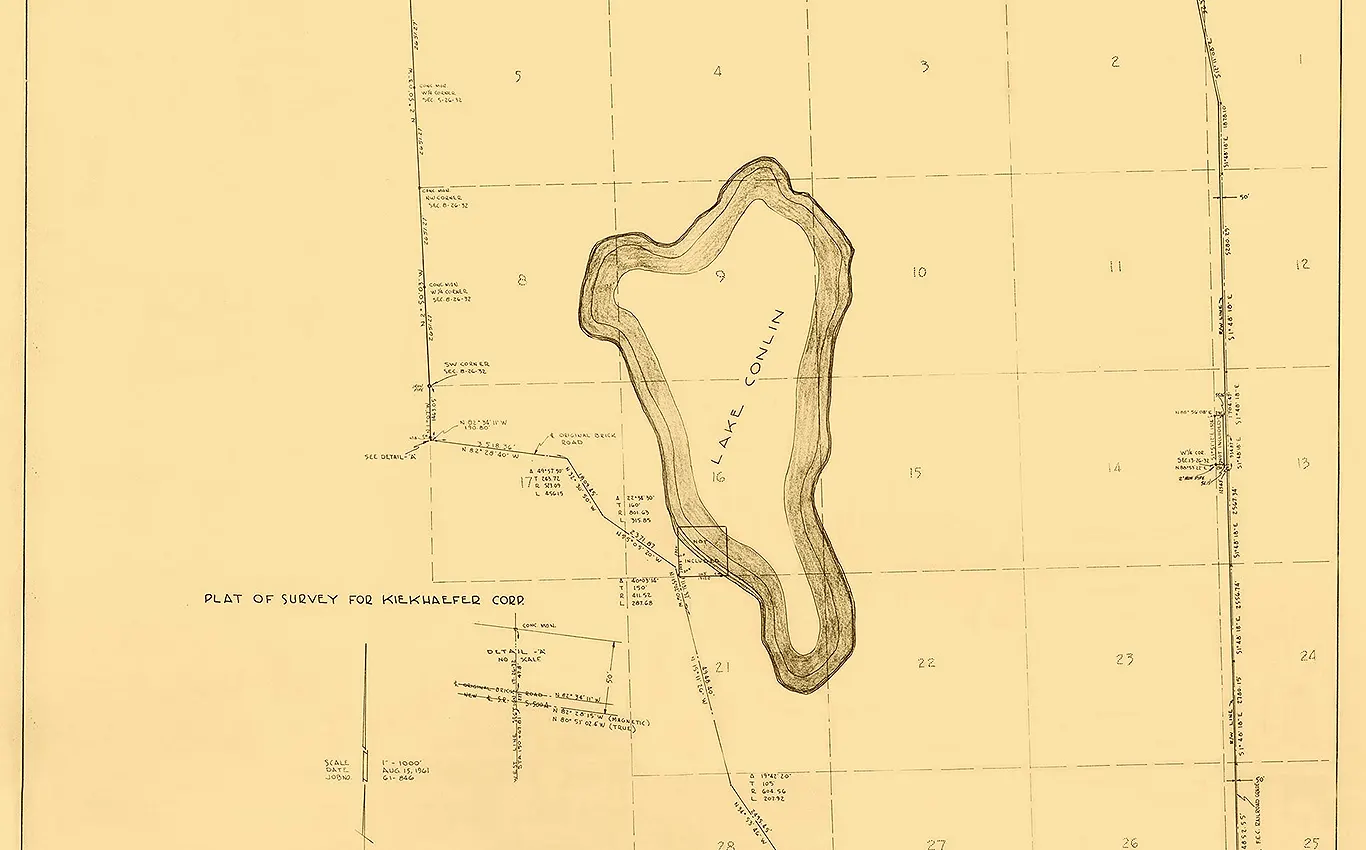
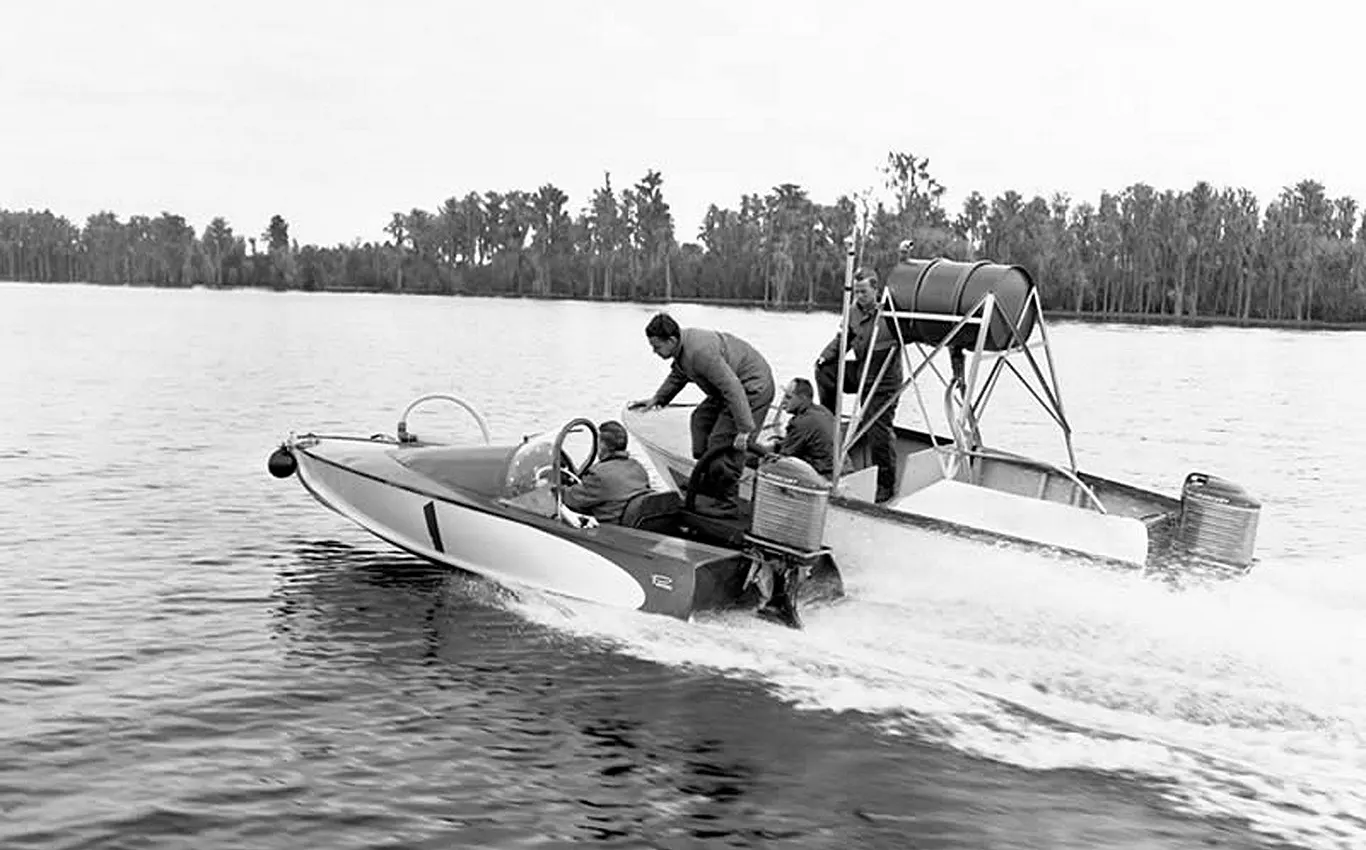
Once Around The Globe
To maintain secrecy Kiekhaefer began calling his new “undisclosed location” Lake X. In 1958 Kiekhaefer attempted Operation Atlas, a 34-day endurance trial that would see two boats powered by 70-hp Mercury Mark 75 outboards run non-stop on Lake X for 25,000 miles, equivalent to a circumnavigation of the world. Over the ensuing years development of new Mercury performance and racing engines, hydrodynamic testing, and race-boat rigging was conducted at Lake X. Some of the fastest boats on the water earned a Rigged at Lake X sticker.






